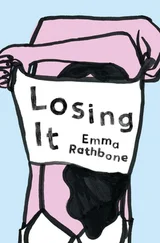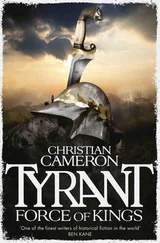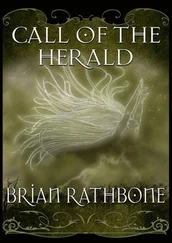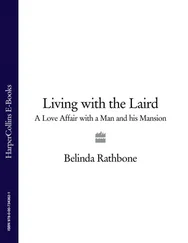It's a trick fakirs perfect, often by the simplest of means. Appear in a locked room? Simple. Hide there before the room is locked. Manifest in a crowd? Easier still. Arrive in disguise and when there is a distraction, throw it off. They have garments that look coarse and poor through cunning weaving and painting but made of silk so fine they can be crushed and balled away.
They can swallow almost anything so their bodies provide hiding-places that walk with them; they can get their fists up their rectums and leave there a king's globe, cross and all.
They also know substances with strange qualities, unlikely powers, thatcam turn metals into ashes; they can make a rope stand on end with no apparent means of support and encourage a small boy to climb it. Lying on the ground they make six people each put a finger under them and, lo, they rise into the air and none of the six feels the weight. They work with mirrors. And… they understand how the track of light can be concentrated and bent by passing it through cunningly shaped lumps of glass.
I have seen him quite frequently on the way from Macclesfield Forest. Once walking towards us through the rain up an unusually straight track (unusual, that is, for Ingerlond where all but the Roman roads wind like corkscrews), climbing a hill. But he crossed the ditch when he was still a couple of hundred paces from us and strode away into the mist that came down over the moor. On another occasion he sat opposite us in a tavern, went out as if to take a piss, and never came back. Three times he walked just beside and behind me for an hour or two, then was gone.
Peter insisted that he was a figment of my imagination, that he had heard of such manifestations appearing to people suffering from extreme physical exhaustion and mental distress. Christians even identify this presence with the risen Jesus.
Considering what we had all been through, my response was to ask him, 'Why then. Peter, are we not all suffering the same hallucinations since we have all suffered in similar ways?'
At all events, having heard this plea from the youth we still thought of as Eddie, the fakir came up behind me and whispered in my ear, 'Do you still have the kurundams in your bag?'
'Yes, indeed I do.'
'Let's have a look at them then.'
I pulled them out and laid them carefully on a table, beside the candles that lit the tent. The others were still in the doorway, watching the torches of the Welsh, drinking wine and eating pork. Two good reasons why I was already hanging back behind them.
Have I described these precious stones, these crystals before? Well, I will do so again, but in more detail. They were six inches long, shaped a little like a weaver's shuttle – that is, pointed at both ends and about one and a half inches in diameter at the thickest point in the middle. They were multi-faceted but basically hexagonal, the points at each end being six-sided pyramids. They were perfect, unflawed rubies and even in the dim candlelight on a simple small black oak table, they gathered the light and glowed with it.
'We shall." said the fakir, 'need the brightest mirrors that can be found. Not polished steel or silver, but glass ones, the backs coated with an amalgam of mercury. Such mirrors are made in Nuremburg and Venice but can be found in the houses of the wealthy almost anywhere in the known world."
By now those who had remained in the doorway of the tent had turned back in and were listening to us.
'It would help too, if we had someone with a proper knowledge of the science of optics.'
And, of course, Peter cleared his throat. 'I am not myself an adept,' he said, 'but I have here,' and he tapped the bag he had been carrying since Easter, 'the investigations the great Roger Bacon made on the subject.'
Eddie turned to Sir Roger Croft. 'Get us a couple of mirrors, of the sort the chappie wants, there's a good fellow.'
'I know where I can lay hands on a pair,' said the knight. 'There's a cloth manufacturer in Hereford who trades with the Arnolfini family in Bruges. They sent over a pair as wedding presents when his son got married.'
"While we are waiting,' the fakir went on, 'we could initiate some simple experiments as precursors." and he picked up one of the kurundams, held it point first towards one of the candles and moved it further and nearer. Presently we all gasped. From the pyramidal point furthest from the candle a narrow beam of bright light, not red as one would expect but green, appeared, and with almost no spreading at all linked the stone to a tiny spot of light six feet away on the canvas wall of the tent. Which began to smoulder.
'Light amplified by stimulated emission through a ruby.' said Peter, with awe.
The fakir frowned, as if the Friar had got something slightly wrong.
It took some doing, but it worked. It had never been done before. There was no possibility of a rehearsal or a trial. At sunrise the next morning it would have to work. And Nature, too, would have to co-operate. A river, a low hill to the east, which was behind us, they were given. What was not given, but could reasonably be expected, was a mist. At that time of year, on nights when there was no wind, there was almost always a mist, a fog even. And if there should not be, or if it was not of the substance the fakir wanted then fires burning green wood and wet dead leaves would be lit on the other side of the rise, to create a false mist. These, too, were prepared but in the event not needed.
But all this was as nothing compared to the calculations and brain-racking that the fakir and Brother Peter put into the application of the theories of optics Bacon had adumbrated in code, based on but taking far further the discoveries of his Arab predecessor Abu Yusuf Ya' Qu Ibn Ishaq ul-Kindi. Worse still was calculating the exact point at which the rising sun would be at the right height to make the projection they desired.
All was done in time, but only just. The mirrors, which were small, scarcely eighteen inches across within their carved and gilded frames, but very bright, were placed on scaffolding made from lances and ashpoles found in a nearby farm. The kurundam’s were mounted in front of them and tilted to what the fakir and Peter calculated would be the correct angles.
'Why three suns?' asked Prince Harihara.
'To represent the Trinity. The Three in One, the One in Three we are stupid enough to insist represents the godhead.' Brother Peter replied.
'How.' asked Eddie, 'will the sun shine on two mirrors at once, tilling both with its light at the same time?'
This gave one or two who were there a moment's doubt – we could see it in their faces.
'By the same means," said the fakir, with weary patience inflecting his words, 'that it casts a shadow from your body at the same time as it casts one from mine.'
'Ah. Yes. Of course. I see.'
But I doubted that he did.
It worked, all right. It worked. There was a mist. It hung in the tree-tops, grey like a wolf's pelt in the pre-dawn light. It became rosy then golden and… began to shift. But then the sun. a red disc beneath a bank of cloud, rose above it and the illusion was there, there for perhaps two minutes, but long enough.
The sun's rays hit the mirrors, were reflected back into the kurundams, which projected them as beams that spread enough to form red circles of light on the mist, just below the sun itself, giving an illusion of three suns not one. The army cheered, they'd been told to. Two lords, who had been about to lead their men across to the other side, reined in their horses and rather bashfully waited Eddie's command to charge. It came as the two lower suns faded. Pausing only to announce that from henceforth the sun in its glory, this sun of York, would be his personal badge and that he wanted a shield with the three suns on it prepared immediately, Eddie touched spurs to Genet's flanks and trotted across the bridge to lead his men to victory.
Читать дальше












